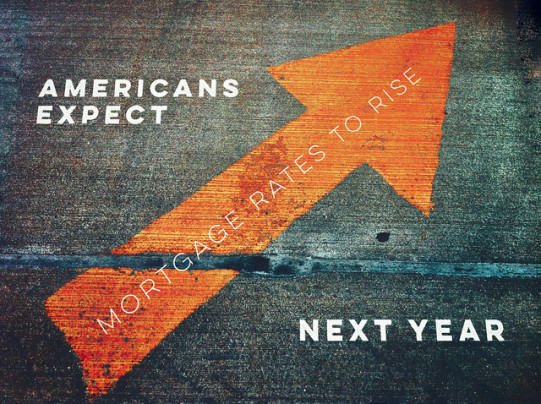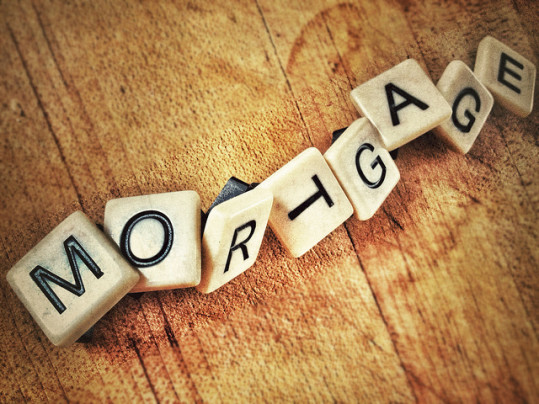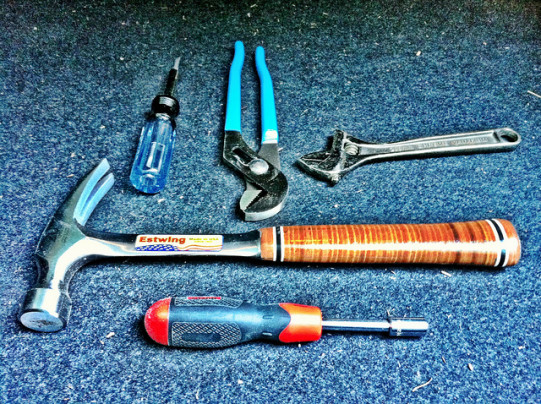With mortgage rates as low as they’ve been recently, it’s probably not surprising that a growing number of surveyed Americans say they don’t expect them to fall any further over the next 12 months. The survey – Fannie Mae’s monthly Home Purchase Sentiment Index, which tracks consumers’ attitudes toward buying and selling a home, prices, rates, household income, etc – found a 6 percent jump in the number of participants who felt rates would likely be higher next year at this time. Overall, Americans have been in a less optimistic mood since the survey hit its high in July. In fact, among the survey’s major components only the one asking if respondents’ household income is significantly higher than it was 12 months ago saw an increase. Doug Duncan, Fannie Mae’s chief economist, says low inventory, higher prices, and the upcoming presidential election may be causing uncertainty. “The decline in the HPSI over the past two months from the survey-high in July adds a note of caution to our moderately positive housing outlook,” Duncan said. “Downside changes came in particular from the HPSI components mortgage rate direction and good time to buy a house. In addition, the starter home tight supply and rising home prices as well as the unsettled political environment are likely giving many consumers a reason to pause or question their home purchase sentiment.” More here.
Archive for October 2016
Hot Housing Market Will Continue In 2017
Forecasts from Fannie Mae, Freddie Mac, the National Association of Realtors, and the Mortgage Bankers Association all say that home sales should surpass this year’s totals in 2017. In fact, the forecasts call for somewhere between 6 million and 6.5 million homes to be sold next year. Part of the thinking behind the predictions has to do with the number of young Americans who are now reaching their prime home buying years. Because the number of first-time home buyers has been lower-than-normal recently, there should be growing pent-up demand among younger Americans, who will be eager to buy next year and beyond. Because of this, economists estimate that sales should continue to be strong over the next three years. That’s significant, especially if you’re a current homeowner who has been debating whether or not now is a good time to sell your home. It’s also important for potential buyers. Why? Because an influx of interested buyers could mean more competition and, if for-sale inventory stays low, higher prices. That means, prospective home buyers who are hoping to buy should start getting their finances in order now, so they’ll be able to put their best foot forward when the time comes. More here.
Average Mortgage Rate Drops Again
According to the Mortgage Bankers Association’s Weekly Applications Survey, average mortgage rates fell last week across all loan categories, including 30-year fixed-rate loans with both conforming and jumbo balances, loans backed by the Federal Housing Administration, and 15-year fixed-rate loans. The drop marked the second consecutive week of declines and brought rates to their lowest level since July. But, though the decrease stirred up refinance activity, purchase application demand was flat from the week before and down 14 percent from last year’s level. Michael Fratantoni, MBA’s chief economist, told CNBC the numbers may not tell the whole story. “The mortgage industry is celebrating the one year anniversary of the TRID/KBYO regulatory implementation date this week,” Fratantoni said. “Purchase application volume last week was almost 14 percent below the same week a year ago. That was the last week for mortgage applications to be covered by the prior disclosure regulations and as a result there was a spike in application activity.” In other words, though this week’s results show year-over-year purchase activity down significantly, it should return to normal with next week’s survey. The MBA has conducted their weekly survey since 1990. It covers 75 percent of all retail residential mortgage applications. More here.
Top Projects To Boost Your Home’s Value
Home values aren’t just important to prospective buyers looking for something that fits their needs and budget. Current homeowners also have to think about what their home is worth, should they decide to sell their house or refinance their loan. The good news is that projects that raise your home’s worth are also going to be things that add to your quality of life while you’re still living there. In other words, whether you’ve just bought your first home or are a baby boomer looking to sell, the following projects will be good investments for both your house and your bottom line. According to a list from homes.com, the number one area to focus on is the kitchen. Kitchen remodels recoup the largest percentage of their cost, whether you redo the entire room or just replace the countertops or cabinets. Bathrooms are also popular with buyers and, like kitchens, a tasteful remodel can recoup most of its costs. Think about re-grouting, updating fixtures and handles, or just applying a new coat of paint. Energy-efficient windows and appliances are something else to consider. Energy efficiency is popular with buyers and can save you money on utilities in the meantime. Finally, spend some time outside. Refreshing your home’s exterior and landscaping can help with a good first impression and can be as simple as planting some flowers and repainting the front door. More here.
Low Rates Help Sustain Market Momentum
Mortgage rates and home prices have been headed in opposite directions for a while now. Following the housing crash, rates dropped to record lows and have hovered there over the past few years while home prices skyrocketed back from their post-crash decline. This, of course, has been fortunate for the housing market and potential home buyers – as price increases and their effect on affordability conditions have been muted somewhat by consistently low mortgage rates. Buyers who may’ve been discouraged by price spikes in their local market continued to find opportunities because of their ability to lock in a low rate on a long-term loan. This remains true. In fact, according to Freddie Mac’s Multi-Indicator Market Index – which compares current conditions to historic norms – 75 percent of the top 100 metropolitan areas are showing a three-month improving trend, despite the fact that prices are still rising. Len Kiefer, Freddie Mac’s deputy chief economist, says mortgage rates are the reason. “Nationally, MiMi in July was largely unchanged for the third consecutive month,” Kiefer said. “Despite rising house prices, the majority of housing markets have sustained their momentum due in large part to low mortgage rates. For example, purchase applications, as measured by MiMi, were up more than 17 percent year-over-year and remain at their highest level since December 2007.” More here.
Do Buyers Prefer New Or Existing Homes?
In a lot of ways, comparing sales of new and previously owned homes is unfair. For starters, new homes generally sell for a higher price. In fact, the National Association of Realtors’ Profile of Home Buyers and Sellers found the typical new home sold for $277,000 in 2015, while an existing home cost around $209,000. Not to mention, many Americans live in areas where there are few new home developments. Naturally, this means far more existing homes are sold each year compared to new homes. But how many? Well, new home sales were strongest in the late 1980s, when they peaked at near 30 percent of all home sales. These days, however, far fewer new homes are sold. This is partly due to the slow pace of the market’s rebound following the housing crash. A lower-than-usual number of new homes being built and sold resulted in new home sales falling to their lowest point in 35 years. In fact, over the past four years, they’ve accounted for just 16 percent of all sales. However, as new home construction improves and returns to pre-crash levels, this will undoubtably change. More here.






